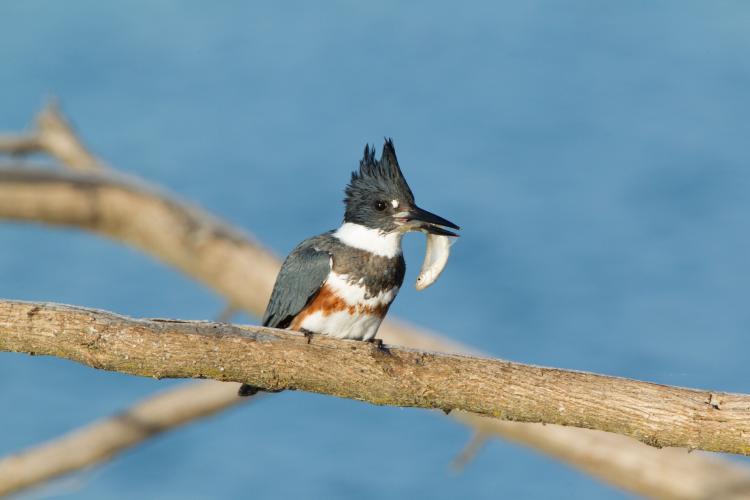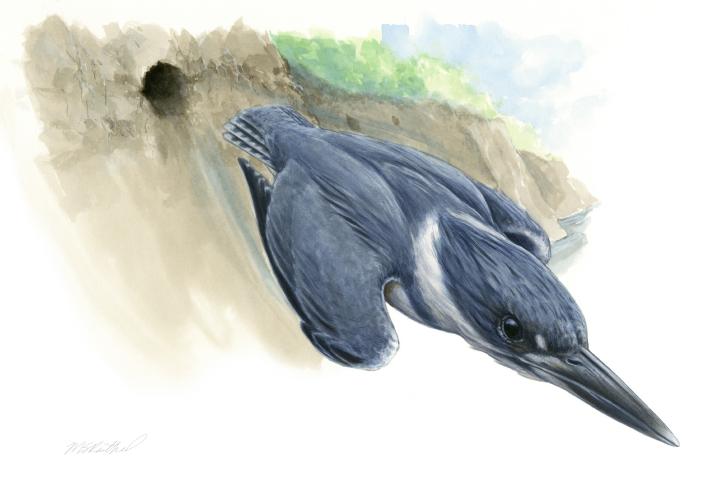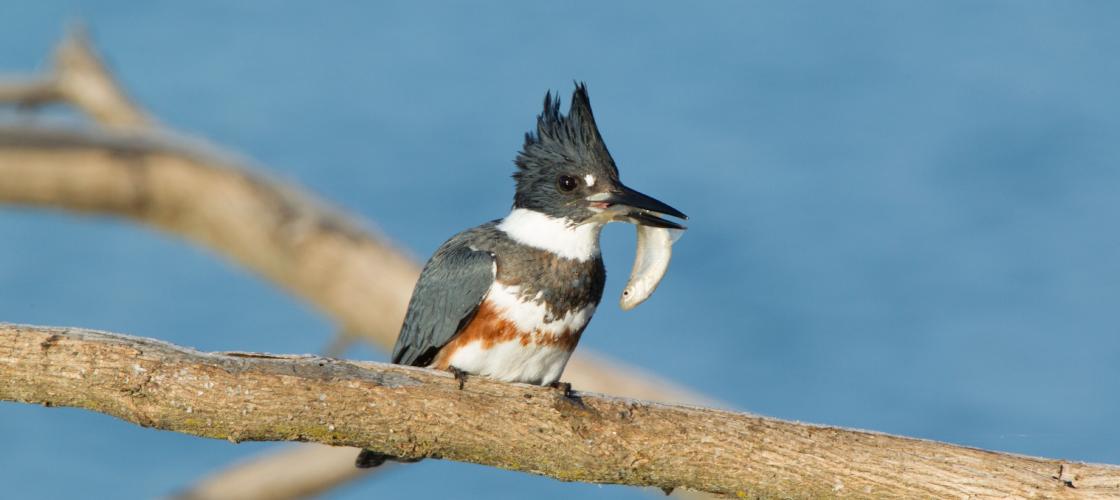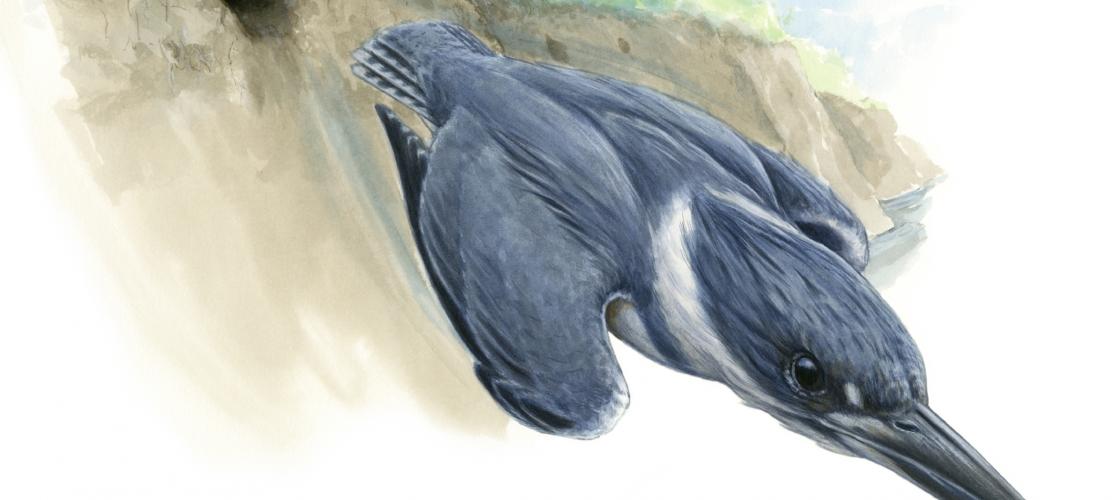One of Missouri's best anglers is a bird. The Belted Kingfisher perches along shorelines, and dives head first into the water to grab a small fish with its pointed bill. It then flies up out of the water, beats the fish against a branch, flips it in the air and swallows.
Belted kingfishers also eat crayfish, frogs, toads, and other critters. You may find them by listening for the loud rattling call as they fly along rivers and streams. You can hear their winged call in the radio edition below.
Belted Kingfisher's stand out among the bird crowd with their large head, spikey, mohawk-looking crest on top, and chest banding. The males have a single blue-grey band below their white collar and the females have an extra chestnut-colored band beneath the blue. Unlike most bird species, female belted kingfishers are more colorful than males. That extra bling of color may be because their nest is completely hidden from predators, so no need to blend into the surroundings. Kingfishers nest in burrows they dig in earthen banks along the water. The tunnel slopes upward to the nest at the back end which may help with flooding. Belted Kingfisher parents teach their young to dive by dropping bits of food into the water below their perch. You can watch one strike from the fish point of view in the video below, courtesy of Earth Rangers.
The King of Fish Eaters
The belted kingfisher is a bird with very unique characteristics.
- The belted kingfisher has a big head with a shaggy crest, a long sharp bill and short tail.
- Belted kingfishers hover or perch when they forage over water and dive in the water to catch their prey.
- They have been known to take long flights over fields and forests so a flyover sight is sometimes possible.
- As visual predators, kingfishers require water clear enough for them to see fish swimming below the surface.
- Kingfishers excavate burrows where there is a vertical stream bank or pond edge made of loamy sand, generally near good fishing areas. The burrow extends 3-6 feet into the bank at a slight uphill slope.
For more on Belted Kingfishers, visit MDC’s Field Guide.




Recent Posts
























